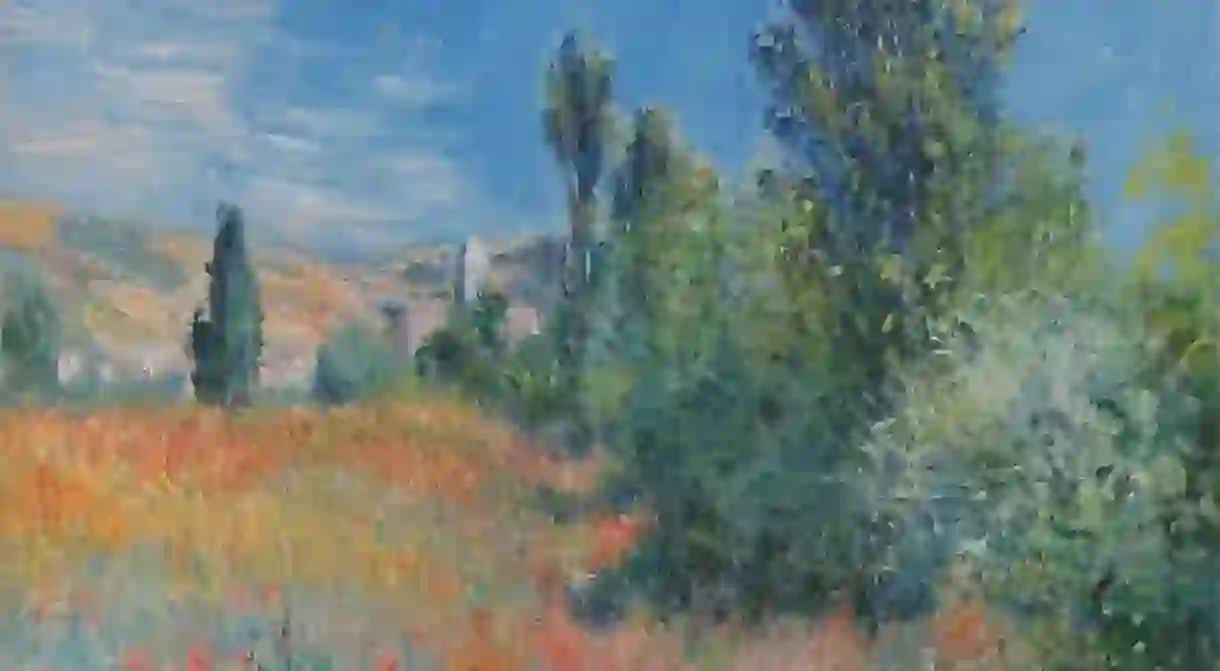Celebrating The Life Of Claude Monet

Arguably the most popular and famous Impressionist painter, Claude Monet continues to captivate art audiences around the world. In commemoration of his death on 5 December 1926, we consider some of the defining characteristics of the French artistic genius.
Although his work was initially criticised, Claude Monet is one of the most popular artists in the world. During his career he produced over 1,000 paintings, which is quite an achievement for an artist whose father wanted him to inherit the family business and become a green grocer.

Controversially rebuffing the traditions of realism, Monet sought to capture the essence of nature; the changing light of time and the seasons. He adopted a new way of painting in the 1860s by leaving the confines of the studio and working en plein air – painting directly outdoors. He drew on various inspirations, including the landscapes of J.M.W. Turner and John Constable, whose work he encountered when he moved to London in 1870 during the outbreak of the Franco-Prussian war. London is also where Monet met his life-long friend and patron, the art dealer Paul Durand-Ruel, who not only supported Monet monetarily, but also ensured that the Impressionists exhibited and subsequently sold their work to an enthusiastic American market.

The birth of Impressionism
Monet’s Impression, Sunrise marks the beginning of the Impressionist movement. Depicting the sunrise over the port of Le Havre, Monet’s hometown, the painting prompted critic Louis Leroy when it was shown in Paris in April 1874 to unintentionally coin the term ‘Impressionism’, when he dismissed this new style of art as the impression of a scene rather than the real thing. It is currently on display at the Musée Marmottan Monet.

Camille Doncieux, the women in Monet’s life
Although the French landscape was undeniably Monet’s muse, the artist did paint the other loves of his life: his family. Monet used Camille Doncieux as a model for a number of his paintings even before they married in 1870. Woman with a Parasol is a subject Monet returned to, first with Camille and their son and later with his second wife Alice.

An avid Horticulturist
Monet adored plants and when he received funding from his patron Paul Durand-Ruel to buy the house he had been renting in Giverny, he began to embark on his final masterpiece: his garden. Ordering rare seeds and working with a team of gardeners, Monet created a remarkable colour-filled vista that would be a constant source of inspiration to his sumptuously painted views of the flower garden and Japanese-inspired water lily ponds.

Monet’s Water lilies gifted to the French nation
In 1922, Monet bequeathed Les Nymphéas – from his famous water lilies series – to the French people as a symbol of peace after the turbulent years of the First World War. Housed in two specially-designed oval galleries in the Musée de l’Orangerie in Paris, the eight canvases measuring 91-metres in length capture the enchanting water lily ponds Monet created at his house in Giverny.

Record-breaking art
It’s rare for a Monet to come onto the market, so when they do, there is quite a foray. In 2016 after a 14-minute telephone bidding war, Monet’s Meule from his Haystack series sold at Christies, New York for a record-breaking $81,447,500. This broke the previous record for the sale of a Monet, which was $80.4, when Le Bassin Aux Nympheas from his Water Lilies series sold in 2008.

Still internationally-acclaimed
It’s fairly staggering to think that Monet’s work wasn’t automatically loved. But thanks to 19th century American collectors, Impressionism became a hit and soon the Parisian elite followed suit. The merits of Monet are far-reaching and fortunately audiences both sides of the pond can experience his urban and rural scenes at Washington D.C’s National Gallery, San Francisco’s Legion of Honour, London’s National Gallery and Paris’s Musee D’Orsay to name but a few locations.

For more insights and information visit our article 10 Things You Should Know About Claude Monet
Want to discover more about an artist’s life? The best artist’s homes and studios to visit













